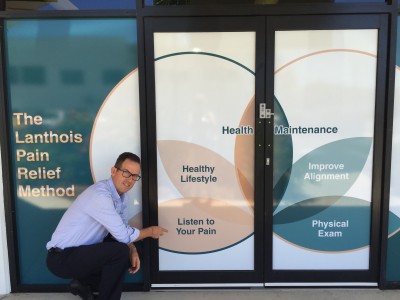Participants in upcoming marathons and endurance events are being warned against using painkillers to try to ward off pain following research showing that these drugs may cause serious side effects.

Listen to Your Pain rather than suppressing pain with painkillers
Sunshine Coast chiropractor and holistic pain relief expert, Dr Paul Lanthois is concerned about a growing trend by recreational and professional athletes of taking painkillers to prevent pain from interfering with their performance in endurance events.
“Researchers have found that almost half of competitors in marathons and half marathons take painkillers and anti inflammatory medications before their race and that is worrying,” says Dr Lanthois who has personally completed a marathon and several half marathons and fun runs.
“Endurance races push your body and mind to the extreme which is part of the challenge and the attraction. But numbing yourself with painkillers is dumb and dangerous because pain is important healthy feedback that helps to protect you from doing serious harm. You need to listen to your body especially when taking on an endurance event.”
His point is supported by research in the British Medical Journal that showed that people who took painkillers before running a marathon or half marathon had a 13% greater risk of adverse events including pain, muscle cramps and stomach cramps. People who took higher doses of painkillers had a three-fold increase in the risk of side effects.
Common painkillers and anti-inflammatories block enzymes that regulate the production of substances called prostaglandins that affect the contraction and relaxation of muscle.
“The danger is if you inhibit these prostaglandins with painkillers, you also stop the important tissue protection usually provided by them,” warns Dr Lanthois. “Researchers have found that this can lead to even more serious intestinal, heart and kidney complications! And I don’t think any race is worth that!”
So what are the alternatives for people who are training and struggling with pain?
“Simple,” says Dr Lanthois “Stop trying to suppress your pain and start to investigate and address the causes of your pain. Your pain is telling you that your body and/or your lifestyle is under the pump to some degree and it’s warning you that you need to change something now.”
Surprisingly, pain does not come from where you feel it. In fact, people with phantom limb pain can experience pain in a limb they don’t even have. The reality is that all pain is generated in your brain. To address the cause of your pain you need to look at all the things that influences how your brain creates the sensation of pain.
“Based upon my 25 years of experience, the underlying causes of your pain would most likely be due to two main things.” states Dr Lanthois. “Your lifestyle habits or the loss of proper body alignment or flexibility. When your body or lifestyle is out of balance you’re not functioning as well, so your brain increases its sensitivity to protect you. That means an increased sensitivity to pain.”
So what lifestyle changes can recreational runners explore to reduce their pain?
Dr. Lanthois’ has 6 suggestions:
1) Nutrition – lots of healthy greens and healthy fats (fish)
2) Water consumption – make sure your urine colour is clear
3) Training intensity – often you need to do more low intensity training
4) Rest and recovery – it’s even more important than the training you do
5) Emotional stress management – don’t underestimate its effect
6) Fitness – have you done enough training to safely complete the race?
Loss of your ideal body alignment and flexibility interferes with the normal flow of communication between your brain and different parts of your body. Like car tyres out of alignment, it also causes increased wear and tear on your body. Your brain compensates to this interference by increasing its sensitivity.
So what can recreational runners do to improve their body alignment and flexibility?
1) Get your whole body examined and aligned by a chiropractor – don’t just get your sore area treated. Get your whole body checked and re-balanced.
2) Get a full body massage – a sports or remedial massage that gets in deep
3) Get your feet, calves and shins massaged – most of your shock absorption occurs in your feet so make sure they are nice and supple
4) Increase the time you spend barefoot – and especially don’t wear thongs
5) Do yoga/stretching/foam rolling – stretch out those tight muscles
6) Acupuncture/Gua Sha – great Chinese treatments that improve soft tissue flexibility and reduce tension
When you actually listen to pain and treat it as valuable feedback you can not only make yourself less susceptible to pain but you can also improve your overall health and wellbeing at the same time.
